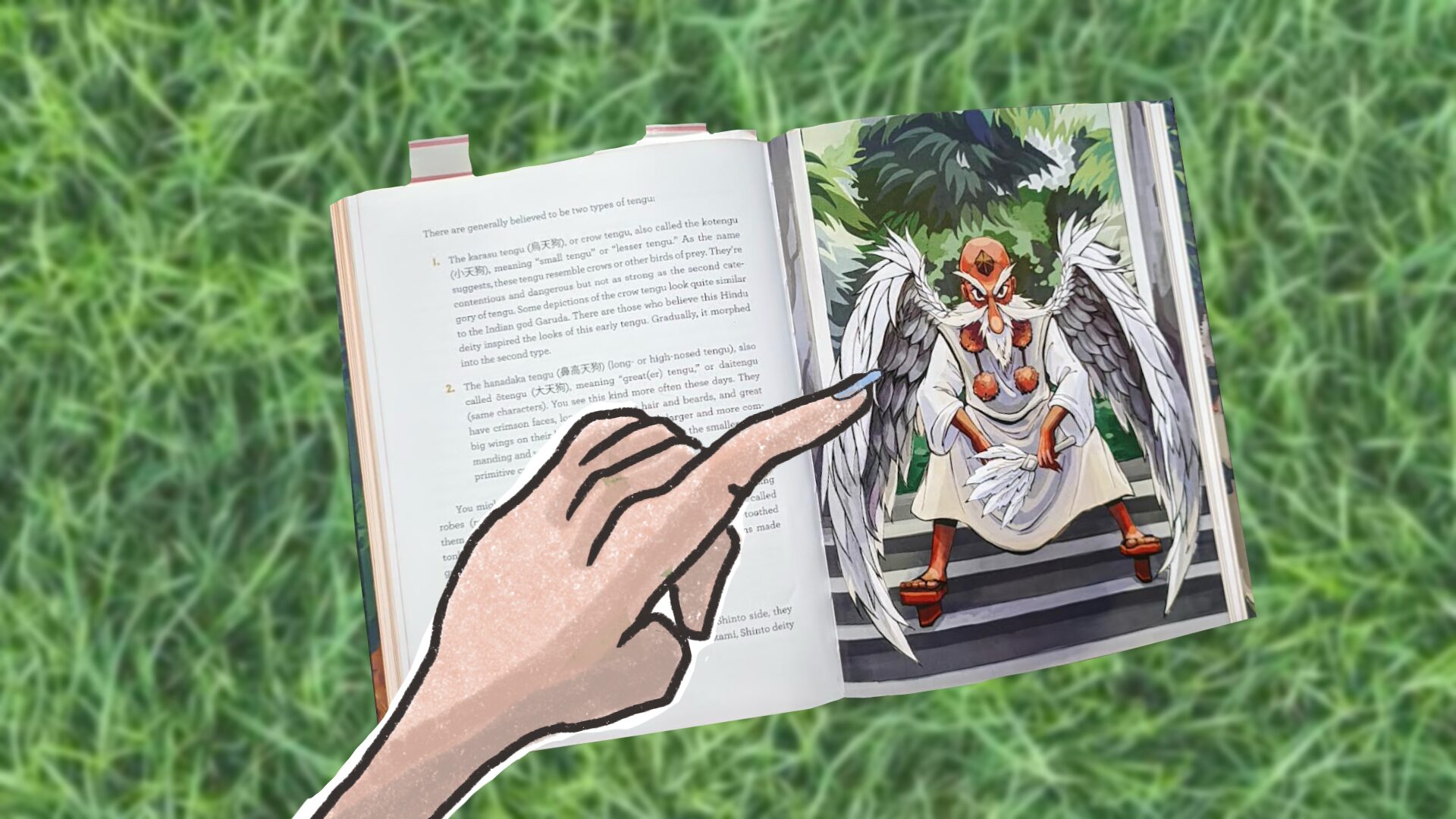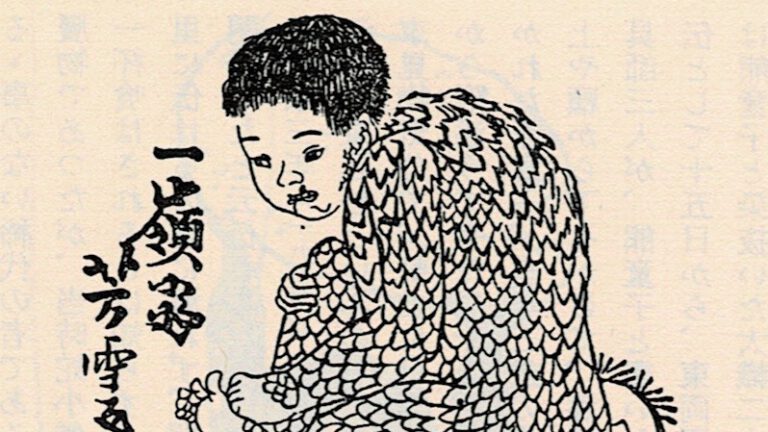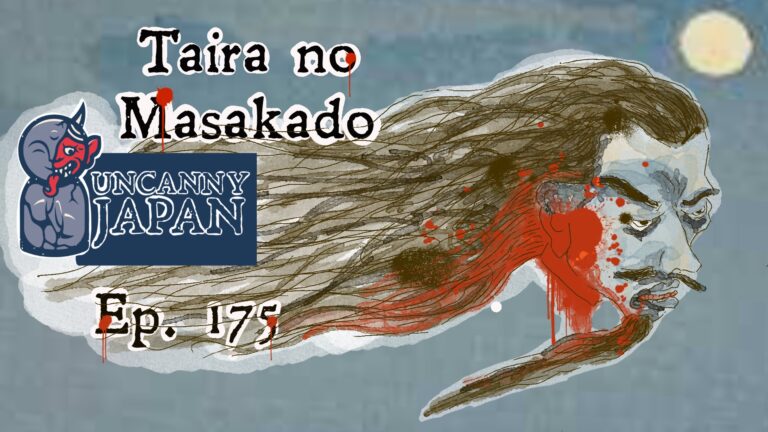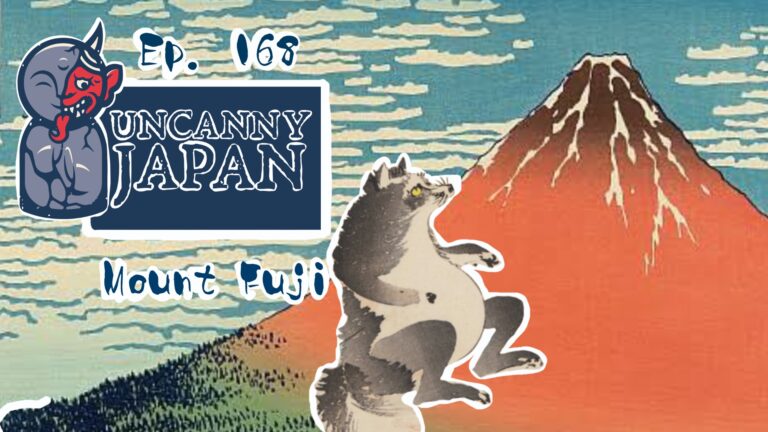An audio drama skit! And slight book promo.
“The Adventures of Marty and Gretchen! Part 1: The Heartbreak on Hanadaka Mountain”

Hey hey, this is Thersa Matsuura and you’re listening to Uncanny Japan.
Intro to Story of Toyoko no Kami
The year is 644 CE and an empress named Kōgyoku is reigning over Japan. When somewhere in the wilds of what is now Shizuoka Prefecture, a man named Ōfube no Ō comes up with an idea. He decides — for whatever reason — to start a new religion. Maybe its divine inspiration, maybe its a bout of silliness, or maybe he’s a little mad. Whatever it is, something inspires him to encourage his fellow villagers to worship a bug. Not any bug but a caterpillar.
I’m author Thersa Matsuura and this is Uncanny Japan, the podcast about all the delightful, weird and more obscure nooks and crannies of Japanese culture. And speaking of obscure nooks and crannies, I want to thank friend and patron Priya for introducing me to today’s topic. Let’s learn more about this caterpillar cult.
What Did Ofube no O do?
Okay, so what about this caterpillar. Well, Ofube no O insists to everyone that it is the God of the Everlasting World. And if you worship it appropriately, you will have a long life and many riches. We don’t know much about Ofube no O, but we can guess he was either charismatic or right, because the villagers didn’t just dismiss him as a local nut and drum him out of town.
He actually managed to convince others to believe this was true. It’s written that he even got witches and wizards called Kamunagi or Kannagi to also preach the gospel of the bug. Note: Kannagi is a gender neutral term for a shaman and sha-woman in Shinto. The word comes from kami (god) and nagi which means being in a calm and peaceful state.
Anyway, they also preached the gospel of the bug. Their sermons went something like this: If you properly worship this insect and you are poor you will become rich. If you are old, you will become young again. And people believed it. These new devotees were so convinced of the caterpillar’s power that they threw all their possessions and all their food by the side of the road and shouted “New riches are coming!” Then they invented new songs and dances to further worship the bug. This new movement spread quickly and made it all the way to the capital.
It’s in the Nihon Shoki
How do we know this? Well, it’s written down in the Nihon Shoki (The Chronicles of Japan) in Chapter 26. The bug itself was called the Tokoyo no Kami (god of the everlasting world) and also Tokoyo no Mushi (the bug of the everlasting world).
A little about the word Tokoyo. Basically, it meant ‘far away place’, often thought of as being across the ocean. Tokoyo could be thought of as a real place or an imagined land. Yes, this seems to be referring to China some of the time. Either way, those who live there live forever in prosperity and wealth.
Amaterasu and the Long Singing Bird
An interesting Toyoko no Kuni aside. If you’re familiar with Amaterasu — the Sun Goddess in Japanese mythology, well, at one point she hid away in a cave and refused to leave, plunging the world into darkness. Now everyone was trying different things to get her come out again. In the Nihon Shoki it talks about a “long singing bird” that was brought over from — yes, you guessed it — Toyoko no Kuni and that bird was used to help coax her out.
Remember sometimes Toyoko no Kuni wasn’t exactly mythical but referencing China? At that time India had already domesticated chickens, which were introduced to China, then China brought them to Japan. So it’s a good guess that the “long singing bird” that brought Amaterasu from her cave (and darkness) thus bringing sunlight into the world again was a rooster. To this day roosters are kept at the Grand Shrine of Amaterasu in Ise and are considered a sacred animal.
What Kind of Bug is the Toyoko no Mushi?
Back to bugs. There’s actually a description of this Toyoko no Kami, too. It goes something like this: The bug usually breeds in the tachibana — mandarine orange — trees and sometimes on a plant called the Hosoki. No one is quite sure what a hosoki plant is. The characters are “creeping pepper” and it could be referring to several plants. I don’t think we need to go into all the debate about that. Anyway, the little god is over four inches long and as big around as a thumb. It is the color of grass with black spots and it resembles a silkworm.
Since this is the 7th century and many new things were being introduced to Japan from China and the Korean peninsula, it’s believed this caterpillar — worthy of its own cult — probably hitchhiked over on some citrus plants.
First, what kind of caterpillar was it? Well, researchers figured out that the most common butterfly larvae that enjoy citrus are swallowtail butterflies. There are loads of discussions here too about exactly what type of insect the Tokoyo no Kami is, but I’ll spare you all that. Have you ever seen one of those thick grass green caterpillars that have marking on their heads that look like eyes to freak out any predator? Well, it’s probably that.
But this whole thing isn’t as crazy as it seems. This is coming from Shinto and we all know Shinto is an animistic belief system with kami (gods or spirits) residing in all things in nature. Rocks, trees, rivers, waterfalls, and yes, why not, insects?
People Were Poor, Needed Hope
Also, you need to get a feel for life in the 7th century. Normal people were wearing clothes made of crushed tree bark or straw and were living in mud huts. Then you have the upper class who were hobnobbing with these immigrants from China and Korea, called kikajin. These kikajin were bringing over advanced construction techniques and fancy woven clothes and new foods and chickens evidently. So they were given high positions in government. Another thing that was coming over at the time was Buddhism. Great elaborate temples were built.
There was an overwhelming sense of powerlessness among the lower classes and regular folk as well as anger that their indigenous religion, Shinto might soon be usurped. So maybe they needed something new and powerful to believe it. It’s ironic though that by worshipping this caterpillar as a great god — which feels like Shinto with its kami and its gods and spirits — they were worshipping something that came from Tokoyo no Kuni (China). Much like the new Buddhists were worshiping the Buddha, who also came from China.
Didn’t matter. They needed something. Or maybe they thought since the Buddha was so surrounded by wealth and prestige, maybe this strange looking bug from the same place could do the same for them.
The End for Ofube no O
The whole thing didn’t end very well. Remember everyone was throwing out their material possessions and food? Well, the chief of the Hata clan was angry about the incredible waste. And also why were they so happy dancing and singing. What were they waiting for? So he had Ofube no O — the originator of the new religion — arrested and executed. A little plot twist, this chief was actually one of the immigrants — a kikajin — who had been given a high position. It sounds like he really didn’t want an uprising on his hands.
And another sad thing, the whole movement only lasted four months before it was quashed. But the swallow tail larva and the swallowtail survived and are still in Japan and much loved, maybe not worshipped. No one believes they get rich or young by dancing around or singing to one of these insects, but they are beauties none the less.






